
USS Leo (AKA-60), an Andromeda-class attack cargo ship, was named for the constellation Leo. She is the only ship of the United States Navy to hold this name. USS Leo served as a commissioned ship for 10 years and 5 months.

USS Shoshone (AKA-65) was a Tolland-class attack cargo ship of the United States Navy, named after a river in Wyoming. She was designed to carry military cargo and landing craft, and to use the latter to land weapons, supplies, and Marines on enemy shores during amphibious operations. USS Shoshone served as a commissioned ship for 21 months.

USS Southampton (AKA-66) was a Tolland-class attack cargo ship in service with the United States Navy from 1944 to 1946. She was sold into commercial service and scrapped in 1971.
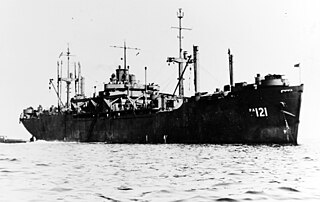
USS Hocking (APA-121) was a Haskell-class attack transport in service with the United States Navy. from 1944 to 1946. She was scrapped in 1974.
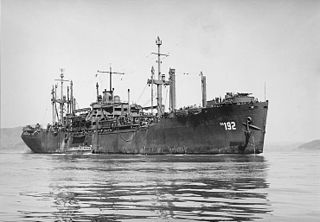
USS Rutland (APA-192) was a Haskell-class attack transport built and used by the US Navy in World War II. She was a Victory ship design, VC2-S-AP5. She was named after Rutland County, Vermont, USA.

USS Logan (APA-196) was a Haskell-class attack transport of the United States Navy, named for counties in Colorado, Illinois, Kansas, Kentucky, Ohio, Oklahoma, Nebraska, North Dakota, and West Virginia. The Haskell-class design, United States Maritime Commission standard type VC2-S-AP5, is a sub type of the World War II Victory ship design.

USS Wabash (AOG-4) was a Patapsco-class gasoline tanker acquired by the U.S. Navy for the dangerous task of transporting gasoline to warships in the fleet, and to remote Navy stations.
USS Lyon County (LST-904) was an LST-542-class tank landing ship built for the United States Navy during World War II. Named after counties in Iowa, Kansas, Kentucky, Minnesota, and Nevada, she was the only U.S. Naval vessel to bear the name.
USS Clamp (ARS-33) was an Diver-class rescue and salvage ship acquired by the U.S. Navy during World War II. Her task was to come to the aid of stricken vessels.

USS Corduba (AF-32) was an Adria class stores ship in service with the United States Navy from 1945 to 1955. She was scrapped in 1974.
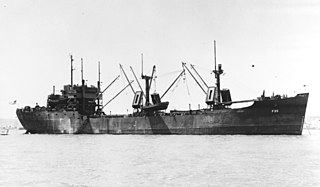
USS Latona (AF-35) was an Adria-class stores ship in service with the United States Navy from 1945 to 1949. She was scrapped in 1973.
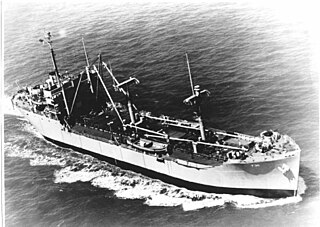
USS Lioba (AF-36) was an Adria-class stores ship in service with the United States Navy from 1945 to 1955. She was scrapped in 1973.
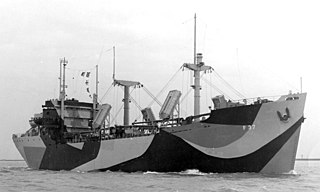
USS Malabar (AF-37) was an Adria-class stores ship in service with the United States Navy from 1945 to 1955. She was scrapped in 1977.
USS Wautauga (AOG-22) was a Mettawee-class gasoline tanker of the United States Navy during World War II.

USS James O'Hara (APA-90) was a Frederick Funston-class attack transport that served with the US Navy during World War II and later in the Korean War. The ship was named after a Continental Army officer who fought in the Revolutionary War and who later became Quartermaster General of the US Army.

USS Lauderdale (APA-179/LPA-179) was a Haskell-class attack transport acquired by the U.S. Navy during World War II for the task of transporting troops to and from combat areas.

USS Knox (APA-46) was a Bayfield-class attack transport in service with the United States Navy from 1944 to 1946. in 1947, she was sold into commercial service and was finally scrapped in 1971.
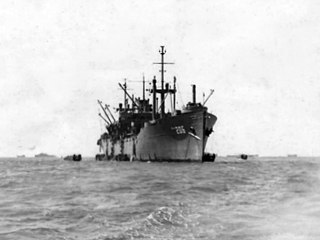
USS Sibley (APA-206) was a Haskell-class attack transport in service with the United States Navy from 1944 to 1946. She was scrapped in 1975.
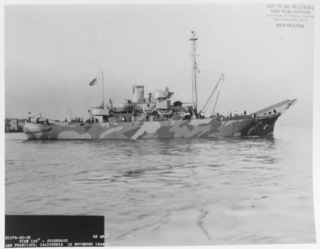
USS Lancewood (AN-48/YN-67) was an Ailanthus-class net laying ship built for the United States Navy during World War II. In service in the Pacific during the war, she earned one battle star. After her February 1946 decommissioning, she was sold to France as Commandant Charcot. Her fate is not reported in secondary sources.

USS Lakewood Victory (AK-236) was a Boulder Victory-class cargo ship acquired by the U.S. Navy during World War II. She served in the Pacific Ocean theatre of operations through the end of the war, earning two battle stars, and then returned to the United States for disposal.

















